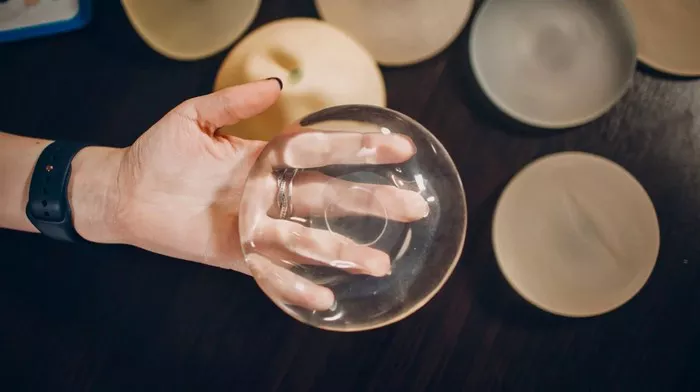Breast augmentation surgery is a popular cosmetic procedure that can enhance a person’s self-confidence and body image. While the majority of breast augmentation surgeries result in successful outcomes, there can be complications and issues that arise, one of which is known as “double bubble.” This article will explore what double bubble implants are, the factors that cause them, and potential solutions for individuals facing this issue.
Understanding Double Bubble Implants
A double bubble deformity in breast augmentation occurs when there is an unnatural contour or appearance in the breast, characterized by a secondary bulge or crease beneath the breast implant. Essentially, it appears as though there are two distinct curves or “bubbles” in the breast, one created by the natural breast tissue and the other by the implant.
Key Features of Double Bubble Implants
Secondary Inframammary Crease: The most noticeable aspect of double bubble implants is the presence of a second inframammary crease (the fold beneath the breast), below the original natural crease.
Implant Visibility: In some cases, the lower edge of the breast implant becomes visible or palpable through the skin, particularly in thin individuals or those with inadequate tissue coverage.
Breast Implant Migration: Double bubble deformities can result in the implant appearing to shift downward, creating the impression of a lower breast position than intended.
Causes of Double Bubble Implants
Double bubble deformities can occur for several reasons, and they are often associated with the surgical technique, implant selection, and the patient’s unique anatomy. Here are some common causes:
Implant Size and Profile: Choosing an implant that is too large for the patient’s existing breast tissue can increase the risk of double bubble deformity. Implants that have a higher profile (greater projection) can also contribute to this issue.
Subglandular Placement: Placing the breast implant above the chest muscle (subglandular) rather than beneath it (submuscular) can increase the risk of double bubble deformity. Subglandular placement provides less coverage over the upper portion of the implant.
Weak Breast Tissue: Patients with minimal natural breast tissue may not have adequate coverage to conceal the lower edge of the implant, making it more likely to become visible or create a double bubble effect.
Anatomical Factors: The patient’s unique anatomical characteristics, such as the shape and position of the breasts and chest wall, can influence the risk of developing double bubble deformity.
Implant Malposition: Improper positioning of the breast implant during surgery can lead to double bubble deformity. For example, if the implant is not centered within the breast pocket, it may cause an unnatural appearance.
Tissue Stretching: Over time, the weight of the implant can cause the natural breast tissue to stretch or descend, contributing to the development of double bubble deformity.
Previous Breast Surgery: Patients who have undergone previous breast surgeries, such as breast lifts or reductions, may be at higher risk for double bubble deformity, as the breast tissue may have already been manipulated.
Solutions for Double Bubble Deformity
Addressing double bubble deformity typically requires a customized approach based on the specific causes and severity of the issue. Here are some potential solutions:
Implant Exchange: In some cases, replacing the existing implant with a different size, shape, or profile may help improve the appearance and reduce the double bubble effect.
Implant Repositioning: Surgical revision to reposition the implant within the breast pocket can correct implant malposition and resolve double bubble deformity.
Implant Pocket Adjustment: Adjusting the size and dimensions of the implant pocket during revision surgery can help create a more natural breast contour and eliminate the double bubble appearance.
Implant Type: Some patients may benefit from changing the type of implant used. For example, switching from a round to an anatomically shaped implant can help create a more natural breast shape.
Combination Procedures: In cases where double bubble deformity is a result of weak breast tissue, combining breast augmentation with a breast lift (mastopexy) may be recommended to provide better support and coverage.
Change in Implant Position: If the initial implant placement was subglandular, switching to a submuscular position may help alleviate double bubble deformity by providing more coverage.
Conclusion
Double bubble implants are a potential complication of breast augmentation surgery, characterized by an unnatural contour or crease beneath the breast implant. While this issue can be concerning, it is essential to understand that it can be addressed through surgical revision and tailored solutions. Patients should consult with a board-certified plastic surgeon who specializes in breast augmentation and revision procedures to determine the most appropriate course of action for their specific situation. With the right approach, double bubble deformity can be corrected, allowing patients to achieve the desired results from their breast augmentation surgery.


